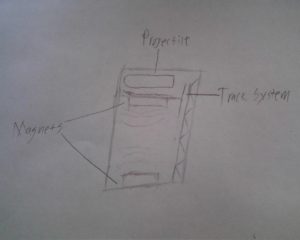On a group of tropical island there are three native tribes each with their own chief and tribesmen. The first island tribe produces fruit and other agricultural foods. The second tribe is able to provide animals as well as meat. The third tribe provides cloth and small kitchen appliances.
Rather than fight and war over these essentials, the three tribe leaders have a meeting to decide the best way to trade their products. One tribe leader says that the best way is to trade in equal measures of weight. This would not work because the cloth and small kitchen appliances tribe would not be able to provide enough weight to get enough things of value.
The second tribe leader suggested they have a monthly trade of equal use between each other. One tribe supplies enough of their item to the other two tribes to last the month. While this would work between the hunters and the farmers, it would not work between the cloth and kitchen appliance tribe because kitchen appliances tend to last longer than meat and corn.
The third tribe leader suggests they use a form of currency. Thus far this is the most agreeable method, but they have a hard time picking a good item to use as money. Gold is too rare, and it was hard for them to make something easy to trade but hard to duplicate.
Then one of them has another idea. Why not go to the mainland and mine large stones to use as money? They would be hard to get, and everyone would agree to use them as trade items. The other two agree on this and the tribes finish their meeting.
The three tribes are happy to spare a few tribesmen to go and mine large stones to use as currency from the mainland, and since they are hard to get, nobody has any issue with gaining to many stones to quickly. However, moving these stones between the islands is a huge pain and a hassle to do. So rather than moving them every time someone buys a a cow or small kitchen appliance, they just decide to say that the stone in a certain spot belongs to this one guy.
This works out well for them. The tribes all agree that each stone has it’s own owner, and that the stone can change hands just by telling the other chief about the exchange. The stone never actually moves, but the trade is easily made, and all the tribes know about it.
On one particular mining trip, the boat carrying the stone and the tribesman gets caught in a storm. The tribesmen survive, but they are forced to drop the stone in the ocean. When they come back and tell the other tribes, they all agree that even though the stone is at the bottom of the ocean, the tribesmen still earned it, and it can still be used as currency. Bitcoins are like the stones. They have no real value, other than what we agree on. There is no real benefit from mining them alone, but they are usable nonetheless. Everyone has a record of who owns what bitcoin, and this record is called the block chain, or history of transfers. There are people who can mine more bitcoins, but it is a huge effort, and not always worth it.


